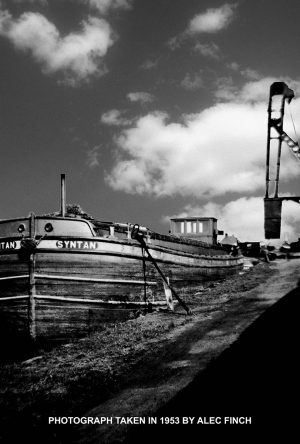The wonderful film of Richard Hodgson and Sons from 1937 that brings back many memories. My father used to buy dressing hides from them for Muirheads in Glasgow having joined them as a finishing chemist in 1934, I imagine they were being produced for Muirheads at the time this film was made and he met some of the people involved.

As a result of my father’s relationship I worked at Hodgson myself as a Leeds University student in 1966. The course required students to find tannery employment in the vacation and Hodgsons was in Yorkshire and so convenient for the University, A totally new experience and a huge a diverse plant compared to Muirheads in Glasgow, which I did not know that well anyway. My father was a senior manager but very much an employee so I had been in many times but I think I had only had one tour when doing a school project.

In 1920 Barrow, Hepburn and Gale, just incorporated to merge 2 companies – Samuel Barrow and Brother and Hepburn, Gale and Ross – went public and promptly acquired Richard Hodgson and Sons Ltd. Hodgsons had been selling to Barrow for many years. Although Barrow did have other factories, and was to keep on acquiring, Beverley was where CEO George Odey made his home and it was the base also of his son Dick who became my boss when I left University.
In the heavy leather yard at Hodgson we were given clogs to wear. These had a really thick wooden sole and a hard leather upper. Sturdy socks were required to prevent chaffing, but they did keep you above the water on the floor and were far more healthy than Wellington boots. They were heavy, though, so when I fell into a lime pit it was quite a struggle to get out and rush to the showers before the sulphide did too much harm. The film says everyone fell into a tan pit but we avoided that like the plague as a strong tan liquor is very viscous and in a deep pit it was hard to get out on your own: you sank and someone had to hook you out.
The film is particularly valuable in showing two operations which are largely impossible to see being done today. These are hand fleshing and hand scudding over the beam. Hand fleshing had long been phased out when I started and everything was done by machine. We still did hand scudding but only on leathers that needed a perfectly clean grain. I spent a week hand scudding white alum tanned cricket ball hides and by the end of it fully realised the weight of whole bovine hides. This was back breaking work. Scudding is rarely if ever done these days, even by machine.
Barrow, Hepburn & Gale, the owner of Hodgson’s, established Bevaloid as a separate company in 1956 to manufacture chemicals. In the 1960s Hodgson’s itself diversified into the manufacture of colloids for the rayon industry and in 1964 began the production of leather for shoe uppers and clothing. It continued growing and expanding through acquisition in the late 1960s and early 1970s.
Yet in just a few years the global threats of cheaper labour and synthetic materials had made their marks and Barrow, Hepburn & Gale closed most of its departments in Beverley in 1978, with 750 redundancies, leaving only the chemical works in operation. I remained close to the company and rejoined after University and was technical director of the upper leather side in Hull in the early 1970s followed by a brief period doing the same job in Beverley before moving to Italy, where it looked as though tanning had a more secure future. I remained in close contact with the company and consider them to be a bit unlucky not have saved more tanning in the UK. Hull remains as a wet blue operation to the present in March 2022.
In 1986 the Beverley tanning industry was finally brought to an end with the closure of Melrose Tanners, which had worked the Keldgate tannery formerly belonging to the Cussons family and since 1946 by the Booth Group.
Michael Redwood
March 2022